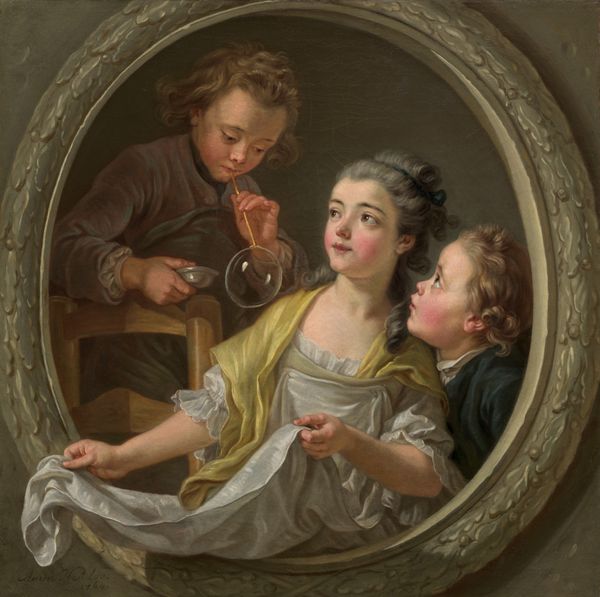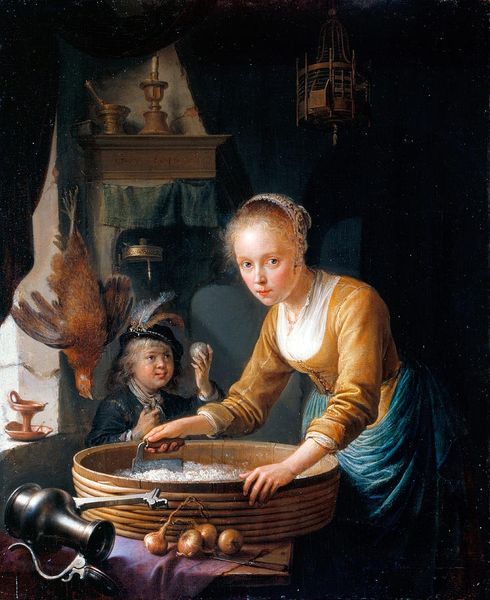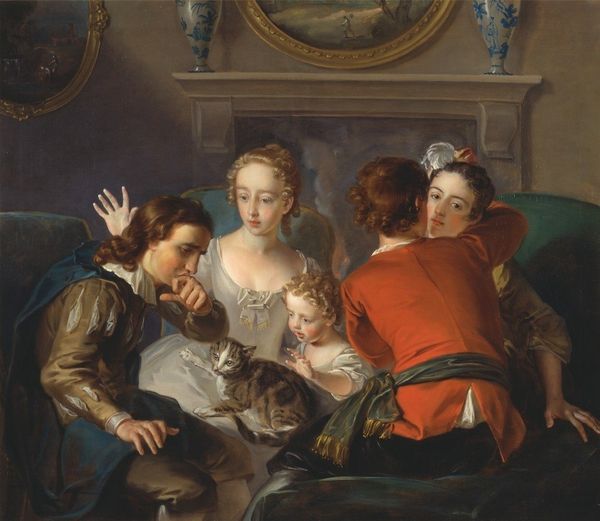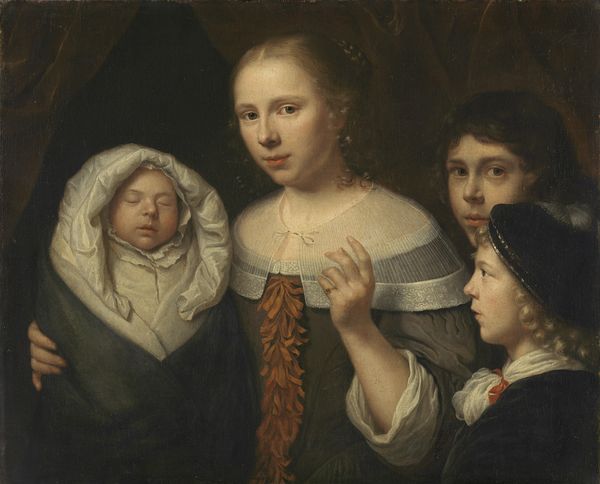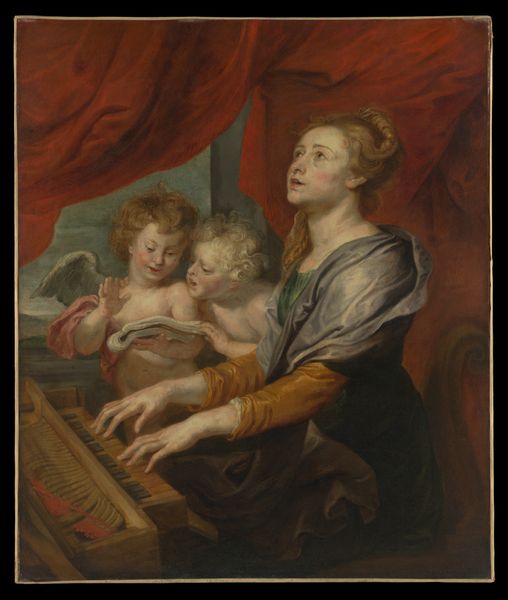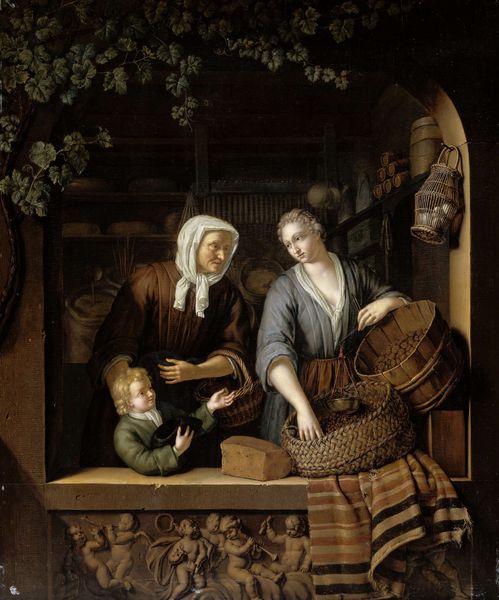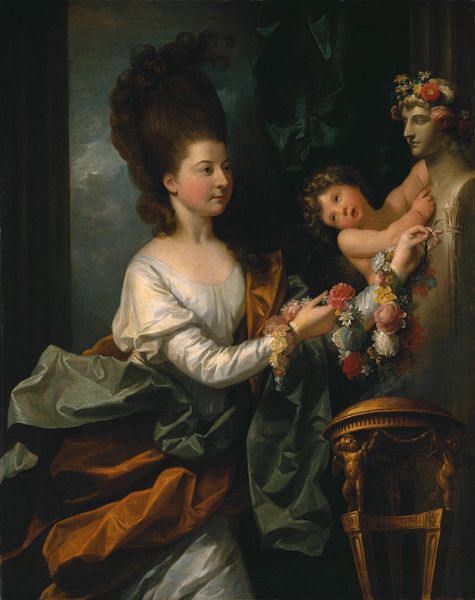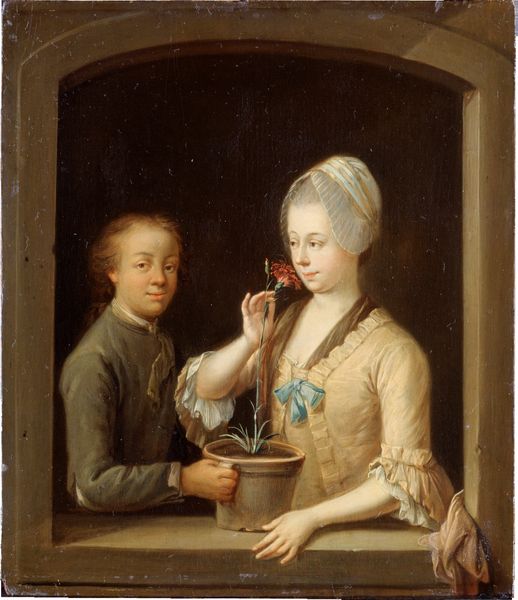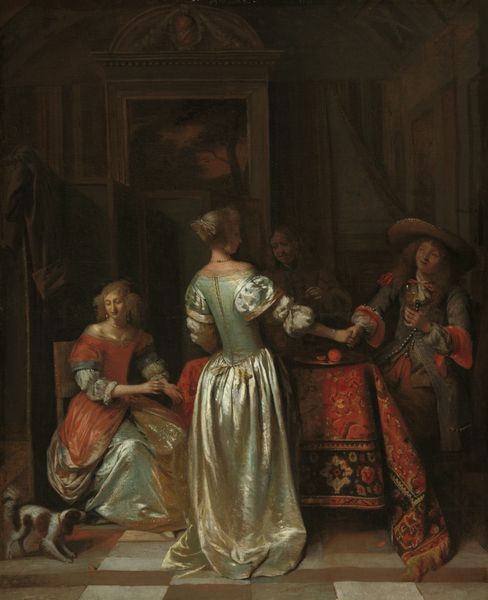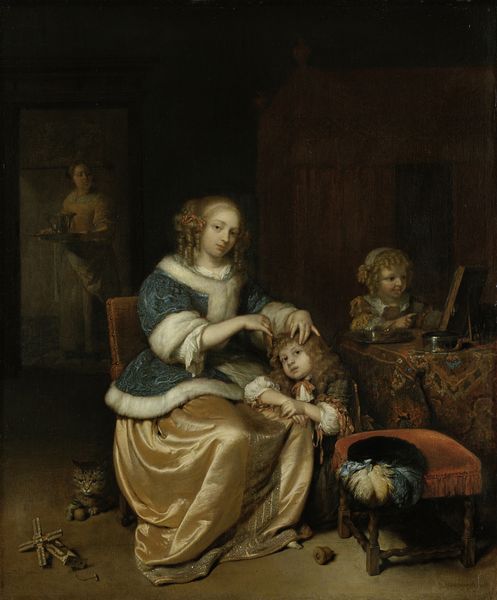
painting, oil-paint
#
portrait
#
character portrait
#
painting
#
oil-paint
#
genre-painting
#
watercolor
#
rococo
Dimensions: overall: 88.6 x 88.5 cm (34 7/8 x 34 13/16 in.) framed: 120.7 x 114.9 x 12.7 cm (47 1/2 x 45 1/4 x 5 in.)
Copyright: National Gallery of Art: CC0 1.0
Curator: Today we’re looking at Charles Amédée Philippe Van Loo’s 1764 oil on canvas, "The Camera Obscura." Editor: It’s wonderfully intimate, a slice of 18th-century domesticity. I’m immediately drawn to the light and the smooth surfaces – that wooden box looks almost tactile. Curator: Van Loo's genre painting invites us to consider the role of technology in shaping perspectives within a specific social context. It presents the camera obscura, a tool for artists but also a social diversion, observed by figures framed in what could be seen as a literal or figurative window. What social class do you imagine is represented here? Editor: Clearly a privileged one, engaging in fashionable scientific pursuits. The textures of the children's clothing suggest quality materials and careful craftsmanship – look at those tiny ruffles. This hints at a significant investment of labor. Curator: Exactly, this interest intersects with class dynamics of leisure and learning. Notice the expressions; the youngest child reaching out, a sense of wonderment at play. Yet, there is a power dynamic at work here; the older child operates the tool, controlling the perspective for the other figures, who are, in some sense, passively accepting it. Editor: Absolutely. The craftsmanship of the box itself is interesting too; not just its function, but its material presence as an object, created and manipulated. The means of its production contribute to its overall value, as well as dictating the social accessibility of art making. Curator: Precisely, this piece offers insight into a complex interplay of perception, social structures, and emerging technologies. Who is allowed to see and how they see it becomes the unspoken narrative. Editor: And who is tasked with the labour to create not just the equipment they use, but the artwork hanging in museums for us to look at now. It opens avenues to discuss these elements within our contemporary settings. Curator: Indeed, a dialogue about how knowledge, representation, and technology are produced, disseminated, and consumed in our society. Editor: A lasting question for art, craft, and all things made and presented today.
Comments
No comments
Be the first to comment and join the conversation on the ultimate creative platform.
